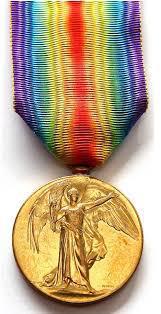ROBERTS, Victor George
| Service Number: | 3546 |
|---|---|
| Enlisted: | 8 February 1917 |
| Last Rank: | Lieutenant |
| Last Unit: | No. 5 Training Squadron, Australian Flying Corps |
| Born: | Hookers Mill, Western Australia , 1895 |
| Home Town: | Norwood (SA), South Australia |
| Schooling: | Not yet discovered |
| Occupation: | Miner |
| Died: | Australia , 27 July 1980, cause of death not yet discovered |
| Cemetery: | Not yet discovered |
| Memorials: |
World War 1 Service
| 8 Feb 1917: | Enlisted AIF WW1, Private | |
|---|---|---|
| 2 Nov 1917: | Involvement Private, 3546, 3rd Light Horse Regiment, --- :embarkation_roll: roll_number: '1' embarkation_place: Melbourne embarkation_ship: HMAT Commonwealth embarkation_ship_number: A73 public_note: '' | |
| 2 Nov 1917: | Embarked Private, 3546, 3rd Light Horse Regiment, HMAT Commonwealth, Melbourne | |
| 12 Dec 1919: | Involvement Lieutenant, No. 5 Training Squadron, Australian Flying Corps |
Help us honour Victor George Roberts's service by contributing information, stories, and images so that they can be preserved for future generations.
Add my storyBiography contributed by St Ignatius' College
Victor George Roberts was born in Hookers Mill, Western Australia but then later moved to Norwood, South Australia. He wasn’t married and had no children. His father Paul Roberts lived in Bakers Hill, Western Australia. His religion was Church of England. Victor George Roberts was 22 years and 5 months old when he enlisted to go to war. His job at the time was a miner. He signed up in Broken Hill, a town in New South Wales on the 8th of February 1917. In war, Victor's Service number was 3546.
He left Australia from Melbourne, Victoria on board HMAT A73 Commonwealth on 2 November 1917. When Victor joined the war, his job was unit 3rd LightHorse Regiment, 32nd Reinforcement. He served as a private in the war. Victor George Roberts fought in World War 1 in Gallipoli on the side of Australia.
Victor marched into war on the 15th of December 1917. He then began in the trenches and started to battle, he didn’t get wounded badly on his first few days at war. Later he was wounded by shrapnel but he survived. In the war, Victor didn’t have any major injuries and he wasn’t put into jail for any bad behaviour.
In July 1918 Victor George Roberts was transferred to the Royal Air Force. He got in a flying accident in February 1919. His wound wasn’t major but it still would’ve been very painful.
Victor George Roberts survived the war. He was a very lucky man to survive. On the 1st of November 1919, he returned to Australia but there is no information about what he did when he returned back home. After staying a while in Australia he passed away but there was no more information about his death.
In total Victor received two medals. The first one was a British War Medal in gold which had a ribbon with rainbow colours. The second medal was silver with a blue and a mustard yellow ribbon.
Bibliography
RSL Virtual War Memorial 2018, accessed 25 March 2018, <https://rslvirtualwarmemorial.org.au/explore/projects/15061/edit?wizard-page-index=3>.
AIF details 2018, accessed 26 March 2018, <https://www.aif.adfa.edu.au/showPerson?pid=257227>.
Unit Diaries 2018, accessed 26 March 2018, <https://www.awm.gov.au/collection/AWM4/>.












